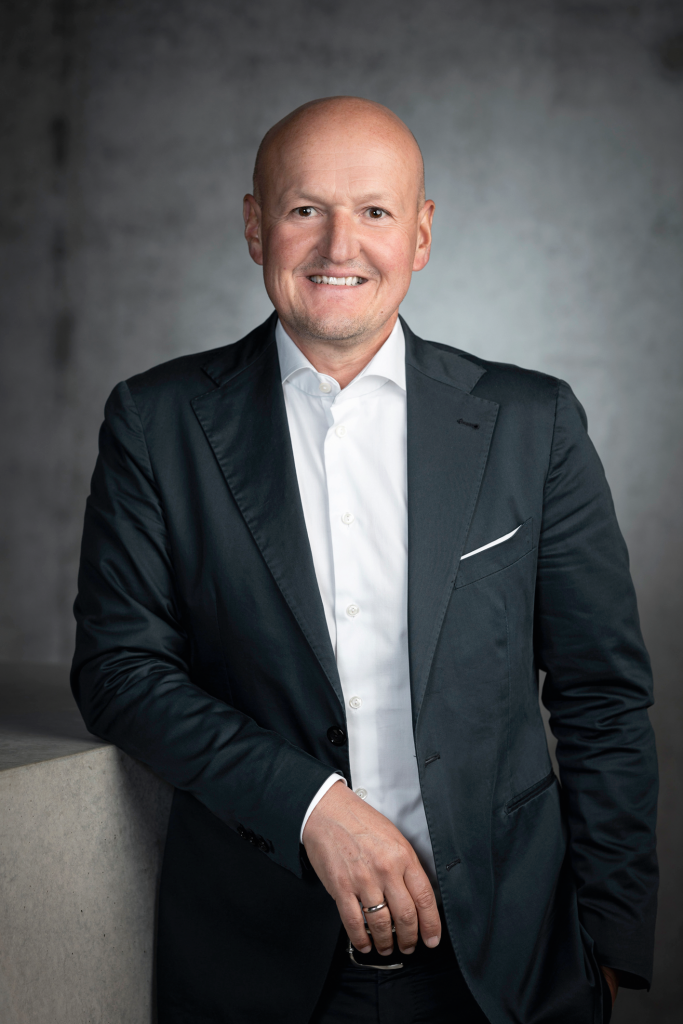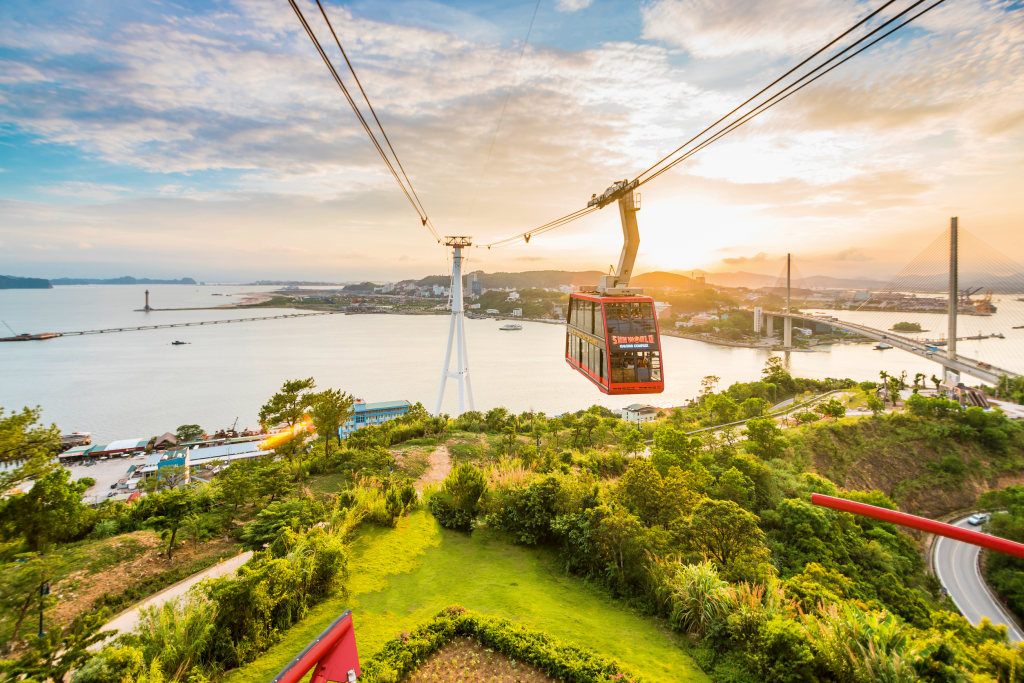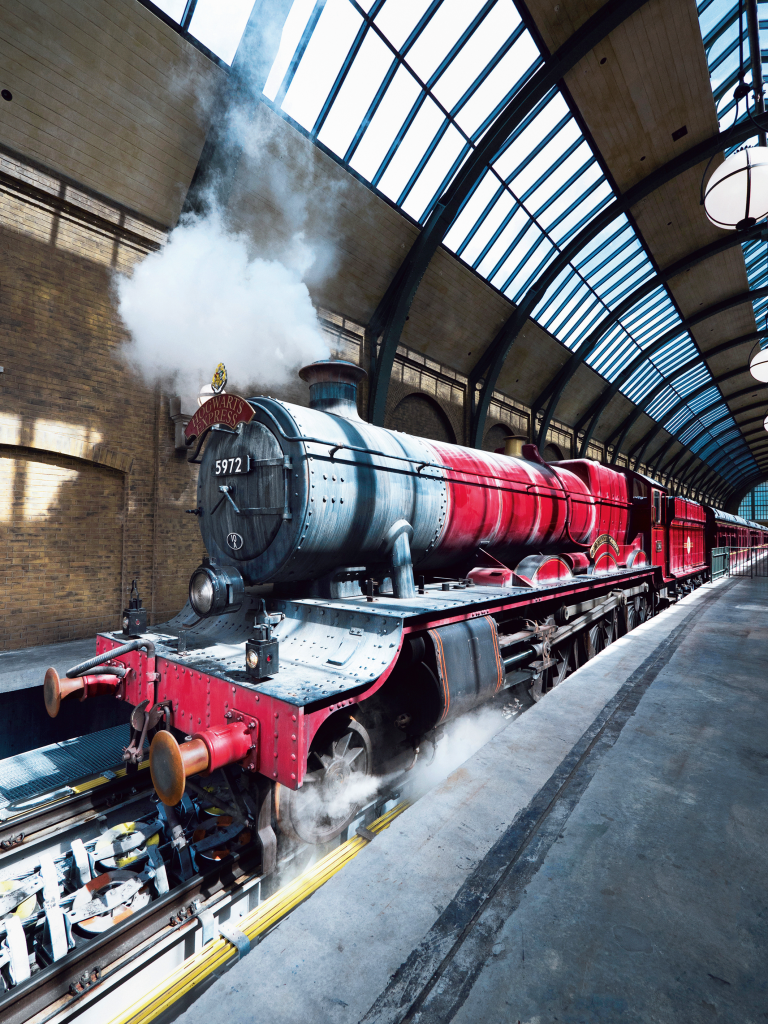The transport solutions of the future are being created in Wolfurt, as ropeways are increasingly conquering urban areas and not only mountains
More than 3,100 employees in 50 countries around the world plan, develop, design, manufacture and build a wide variety of ropeways. To date, transport solutions from Austria – whether for passenger or material transport – can be found in around 96 countries. Alexander Klimmer is at the helm of the international ropeway giant, whose history began in 1893 with its foundation by Konrad Doppelmayr.

© Doppelmayr
In 130 years of company history, you have built more than
15,400 installations worldwide and have become the world market
leader. What makes your transport systems so sought-after and
unique?
Alexander Klimmer: The long history and experience, in combination
with pioneering spirit and innovative strength, form the basis
for the worldwide success of Doppelmayr ropeways. In addition,
partnership-based customer relationships are very important. As
ropeways are very individual projects, they are created in very close
cooperation with the customers. They are specifically adapted to
the customers’ requirements so that passengers get the greatest
benefit, the highest level of comfort and the best ropeway experience.
With your installation in Vietnam, which connects two islands,
Doppelmayr holds the world record for the longest ropeway in the
world at 7,900 metres. Was that a special challenge and is there a
maximum feasible length?
Klimmer: Every ropeway is a special challenge. Ropeways with
world records are, of course, too. The location on the Vietnamese
islands is very unusual and required very well-coordinated execution
and logistics during assembly. So far, this is the longest installation
we have implemented in one section. The feasibility of such
an installation is influenced by the topography, among other factors,
but also by its usage. Since ropeways are limited in their travel
speed, a long section also means a corresponding travel time. Doppelmayr
is actively driving innovation – exemplified by the recently
launched TRI Line and the single-cable ropeway for 20 passengers
with a corresponding new cabin. With both systems, an unprecedented
transport capacity of 8,000 passengers per hour and direction
becomes possible. This means that the limits of ropeway
technology are also being continuously pushed by technological
progress.
How much have ropeways changed over the decades – from a
pure means of transport to a luxury cabin?
Klimmer: In most cases, the driving forces behind innovations in
ropeways are safety, performance and comfort. The latter refers, on
the one hand, to the comfort of the ropeway employees who work
on the ropeway every day as well as perform maintenance. This
should be as comfortable and simple as possible. This is also how
we develop our components. The other comfort factor relates to the
passengers – they should be as comfortable as possible during the
ride. Enough space, a great view, entertainment during the ride,
accessible boarding, ergonomic seats, heating, air conditioning,
WiFi and much more. Over the decades, cable cars have definitely
changed – they have evolved for the better.

© Doppelmayr
Due to the increase in energy costs, we have heard again and
again that heated seats, for example, are being switched off. Will
the ropeway of the future be more energy-efficient?
Klimmer: The ropeway is a very sustainable mobility solution.
There is, as everywhere, potential for savings in ropeway systems,
and switching off the heated seats is one of them.
How much does sustainability play a role at Doppelmayr?
Klimmer: Both in the production of components such as gondolas
and masts and in construction. Sustainability plays a major role, of
course, both for us as a company and as a partner for our customers,
who are very committed to the careful use of resources in their regions.
Are your carrier systems for mountain bikes a way to shift business
to the summer months?
Klimmer: The solutions for transporting bicycles, mountain carts
etc. enable our customers to operate their ropeways economically
in the summer months as well. Our customers create attractive
offers for this, and we as a solution provider have the right products
to support this development economically and sustainably. That’s
why there is a suitable solution for all ropeway systems, whether
chairlifts, gondola lifts or surface lifts.
How have digitisation and connectivity changed your ropeway
systems and where is the use of AI possible?
Klimmer: At Doppelmayr we use AI in various areas. At the product
level, our autonomous ropeway, AURO (Autonomous Ropeway
Operation), is a good example. We have introduced autonomous
operation in gondola lifts, one example being the Valisera lift in
© Doppelmyr
The Ha Long Queen ropeway in Vietnam spans the bay between Vinh Ha Long and Cua Luc Bay
for 2,165 metres. St. Gallenkirch. In the meantime, autonomous
operation is also possible for chairlifts. Here, intelligent
image recognition is used in the exit
area in particular. At the service level, we are
increasingly using the possibilities of digitisation
and AI in the area of condition-based maintenance (CBM). In this
context, we use machine learning algorithms to find correlations
between operating data of ropeway components and other data
such as weather data. This enables our customers to predict maintenance
activities in a very targeted manner and to plan them efficiently.
These functions flow into our resort management platform
Clair; the so-called Smart Maintenance is an application in this
system.
AI tasks are also finding their way into our processes, e.g. for
automated translations, combined with our ‘ropeway dictionary’.
We are convinced that we will develop many more exciting features
and possibilities in the digital area that our customers can use for
safe and efficient ropeway operations.
And also in our processes, AI functions are making their way, for example, for automated translations, combined with our 'Cable Car Dictionary.' We are convinced that we will develop many exciting features and possibilities in the digital realm that our customers can use for a safe and efficient cable car operation.

© 2014 Universal Orlando Resort. All rights reserved.
Harry Potter © Warner Bros. Entertainment Inc.
What are the challenges of building urban ropeways like the
one in Istanbul?
Klimmer: The advantages of urban ropeways come to the fore in
an impressive way, especially during construction. Short construction
times, a minimal footprint on the ground in the case of aerial
ropeways and direct connections on a new level are just a few examples.
Coordination of the individual construction sites is an important
issue as well as logistics in the city so
that the existing infrastructure is not affected
during construction. Therefore, work often takes
place at night.
How do you see the future of ropeways in urban environments,
as they are repeatedly discussed and considered in Vienna, where
you are also involved?
Klimmer: e see very great potential for ropeways in the city; this
is already being impressively confirmed by numerous successful
projects worldwide. In Europe, too, we are convinced that ropeways
will find their way into public transport, as they are a perfect
complement to the existing infrastructure network and can close
gaps where there are still traffic problems in public transport. One
example is our project in the greater Paris area, which will start
operations in 2025. The project in Vienna is a private initiative
co-developed by our competitor from Italy.
What is the significance of material ropeways, and can they
play a greater role in transport concepts in the future?
Klimmer: Doppelmayr has product solutions that are used exclusively
for material transport. One example is the RopeCon, which
transports bulk and general cargo of all kinds. This solution is used
in mining, for example, but also in renaturation. In an urban context,
the combined transport of people and goods is an interesting task.
With the Eiger Express in Grindelwald, we have already implemented
such a system – fully automated with a modern intralogistics
solution and a newly developed loading robot.
A special project is the replica of the Hogwarts Express from
the Harry Potter franchise for the Universal Orlando Resort, with
a funicular inside the steam locomotive.
Klimmer: The Hogwarts Express is an excellent example of how
the Doppelmayr Group implements customer wishes. The task was
to create a 1:1 replica of the Hogwarts Express from the Harry Potter
films, with proven funicular technology and a unique carriage
design. The result speaks for itself.
What has been the most complicated or exciting project so far?
Klimmer: Every project is exciting because each has its own story.
Klimmer: Every project is exciting because each has its own story.
And with every project that you have supervised or visited yourself,
you associate your own story. The fact that every installation is
unique is the beauty of our industry.